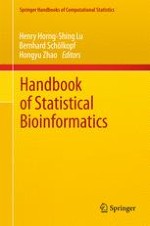2011 | OriginalPaper | Chapter
22. Reverse Engineering of Gene Regulation Networks with an Application to the DREAM4 in silico Network Challenge
Authors : Hyonho Chun, Jia Kang, Xianghua Zhang, Minghua Deng, Haisu Ma, Hongyu Zhao
Published in: Handbook of Statistical Bioinformatics
Publisher: Springer Berlin Heidelberg
Activate our intelligent search to find suitable subject content or patents.
Select sections of text to find matching patents with Artificial Intelligence. powered by
Select sections of text to find additional relevant content using AI-assisted search. powered by
